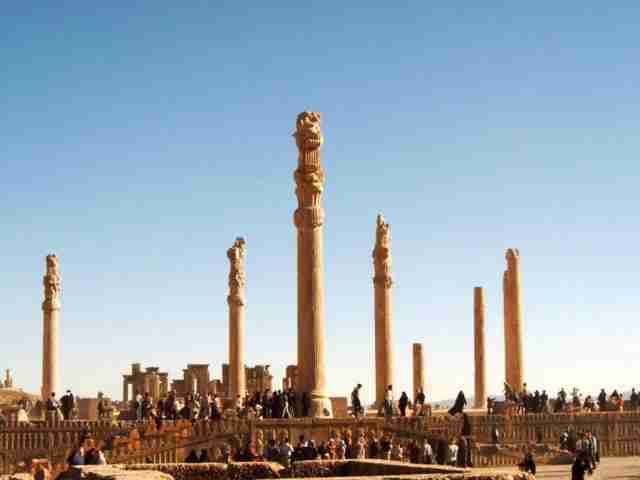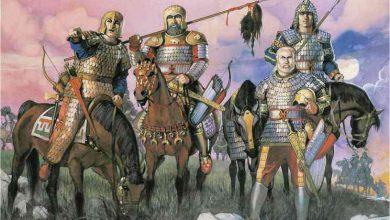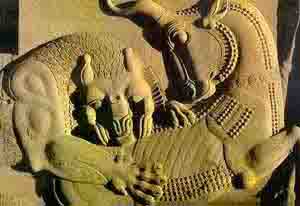Knowledge of gamers (Persepolis)
Parse or Takht Jamshid is the name of one of the ancient cities of Iran, which was the luxurious ceremonial capital of the Iranian Empire during the Achaemenid Empire.. Darius the Great, Xerxes and Ardeshir I once established a center for religious ceremonies and celebrations, especially Nowruz, in Persepolis for about 50 years.. On the first day of the new year, many groups of different nations, representing satrapies or governors, from Greeks and Egyptians to Babylonians and Indians, gathered in Persepolis with gifts such as dishes made of lapis lazuli, all kinds of gold cups, and various animals and gave their gifts to They were presenting to the king..
Historians believe that Alexander the Great, the Greek general, attacked Iran in 330 BC and burned Persia and probably destroyed a large part of Achaemenid books, culture and art.. However, the ruins of this place are still standing in Maroodasht city in Fars province, and archaeologists confirm the signs of fire and invasion from its ruins..
Since 1979, this place is one of the registered works of Iran in the UNESCO World Heritage.
At the time of its construction, the name of Takht Jamshid was "Parse" meaning "City of Persians".. The Greeks called it Persepolis (In Greek, it means "Perseshahr") have read. In contemporary Persian, this building is called Takht Jamshid or the royal palace of Jamshid, the legendary king of Iran, which is also mentioned in Ferdowsi's Shahnameh..
Persepolis is located in present-day Maroodasht, about 47 kilometers northeast of Shiraz in Fars province, near the small river of Palvar.. Its eastern side is on Mount Rahmat and the other three sides are formed by Hafez walls. Parse is built on a safeh or a stone platform whose height is between 8 and 18 meters above the level of Mardusht Jalga, with an area of 300 x 455 meters.. Also, the length of Persepolis is equal to the length of the Acropolis in Athens, but its width is four to five times that of the Acropolis.
The total area of the palaces of Persepolis is 125 thousand square meters, which consists of the following important parts:
Official and ceremonial palaces of Parse (Gate of Nations Palace)
Private residences and small palaces
Royal Treasury
Fortress and protective rampart
How to build Persepolis (پارسه)
The oldest part of Parse is based on archaeological findings of 515 BC. As stated in many and various historical sources, the construction of Parse began about 25 centuries ago on the western slopes of Mount Rahmat or Mitra or Mehr during the time of Darius the Great and then continued by his successors with changes in the original building.. According to the clay inscriptions discovered in Parse, countless architects, artists, craftsmen, workers, women and men participated in the construction of this magnificent building.. The construction of this large and beautiful complex took 120 years according to a story.
Over time, some of the pillars of the gate of the Hundred Pillars Palace in Persepolis have survived events such as earthquakes and remained standing.. The secret of their stability against earthquakes is in the junction of these pieces, where the two pieces of the column are connected by molten lead.. In addition to strengthening the connection of the two pieces of the column, this lead played an important role in the structure's resistance to earthquakes. Lead is a malleable and soft metal that reacts and does not break when an earthquake occurs, this is the same role that is assigned to the spring on the columns in today's and modern buildings..
One of the architectural arts in Parse is that the ratio of the height of the doors to their width and the ratio of the height of the columns to the distance between the two columns is the golden ratio.. The golden ratio is an important ratio in geometry that exists in nature. This shows the art of the ancient Arabs in architecture.
Apadana Palace, Persepolis (پارسه)
Apadana Palace is one of the oldest palaces in Parse. This palace, which was built by the order of Darius the Great, was used to hold Nowruz celebrations and receive representatives of countries dependent on the presence of the king..
This palace is connected to "Tchera Palace" or "Mirror Palace" by a staircase in its southwest part.. Apadana Palace consists of 72 columns, 14 of which are standing now, the bottom of the columns in the palace porch are round, but the bottom of the columns inside the palace are square.
Thatcher Palace, Persepolis (پارسه)
Tcher or Tchera means winter house. This palace was also built by the order of Darius the Great and it was his exclusive palace.. There is an inscription on it : "I made Darius this Thatcher."
This palace is considered a calligraphy museum, there is an inscription in this palace from ancient Persian, and the side lines above the columns are used from the Egyptian facades.. The main part of the palace was built by Darius the Great, the porch and the southern stone staircase were built by Xerxes, and the western stone staircase was built by Ardashir II.
Hadish Palace, Persepolis (پارسه)
This palace, which was the private palace of Xerxes, is located in the highest part of Sefa Parse. This palace is connected to the queen's palace through two sets of stairs. It is possible that the fire started from this place because of the hatred that the Athenians had for Xerxes because Athens was burned by him.. The yellow color of the stones indicates that the water inside the stones has run out due to heat. It was a small place with 6 x 6 columns. Due to the severe destruction, not much information is available about this palace, many have named it as the mysterious palace.. Hadish means a high place, and because Xerxes' second wife's name was Hadish, he named his palace Hadish.
Palace of the Queen of Persepolis (پارسه)
This palace was built by Xerxes and is placed at a lower height than other buildings. A part of this palace was excavated and rebuilt in 1931 by the famous orientalist, Professor Ernst Emil Herzfeld, and today it is used as a museum and the central office of Parse facilities..
Sadestun Palace, Persepolis (پارسه)
The area of this palace is about 46,000 square meters, and its roof is held up by a hundred columns, each of which is 14 meters high..
Palace of the Council of Persepolis (پارسه)
This place is called the Council Palace or the Central Hall. Probably, the king is discussing and consulting with the elders here. According to the carved motifs, the king entered through one of the gates and left through the other two gates.. For this reason, this place is called the Shura Palace, because there were two heads of the human column here, which are not found in other places, and the human head is a symbol of thinking..
The tombs of the kings of Persepolis (پارسه)
At a distance of 6 and a half kilometers from Parse, Naqsh Rostam is located. In Naqsh Rostam, there are tombs of emperors such as Darius the Great, Xerxes, Ardashir I and Darius II. There is also a fifth tomb which remains half-finished and probably belongs to Darius III..
Imperial treasury building
This building, which consists of several halls, rooms and courtyards, is separated from the rest of Parse by a huge wall..
Flower inscriptions
In the excavations carried out in Parse, a large number of clay inscriptions were found in the warehouses under Parse, which were baked due to the burning of Parse, and all of them were sent to America, unfortunately, many of them were lost on the way, and the remaining amount was also The cause of World War II remained in the warehouses of American universities and was not translated . During the translation of a part of them, it was found that it contains the accounting books of the Achaemenid Empire, and beyond that, it was determined how Iranians lived at that time, for example, it was determined that all workers and engineers in the construction of Parse had rights. ( Wines – wheat and … ) And women had full rights and even had maternity leave, and some people were paid to take care of children. Unfortunately, in 2007, a lot of problems occurred over these inscriptions, in such a way that a number of Jews claimed to be part of the government of the Islamic Republic of Iran. In bombings against Jews, they demanded compensation and introduced these inscriptions as belonging to Iran and demanded to receive these inscriptions as compensation.







It is better to avoid using the name Iran when talking about ancient times, especially the Achaemenid period, and write the name of the country as written by the Achaemenid kings, i.e. Parsha..
Contrary to what most of us believe, Iran is not a very old name and this name has never been mentioned in Persian, Greek, Assyrian and Arabic inscriptions and texts and maps.….not used. Iran, which is originally from Iran, has a religious burden more than it has a geographical burden. Aranshahr also appears in Sasanian stone inscriptions, but it only tells about the type of Sasanian government, not a geographical area. . In the book Al-Baldan written by Ishaq Hamdani, Iran is mentioned only once, that it is a city or province next to Balkh, not present-day Iran.
The name of Iran is mentioned for the first time in the Shahnameh, but with a simple glance, one can see that the geographical boundaries of this country in the Shahnameh mostly go back to the countries of Afghanistan and Tajikistan, and Ferdowsi mentioned Pars as a separate country whose border with Iran is Zabul.. In the book Majam al-Tawaikh, which was written two centuries ago, Iran is described as a province in Afghanistan, and it is located on the western side of the province of Malik Fars..